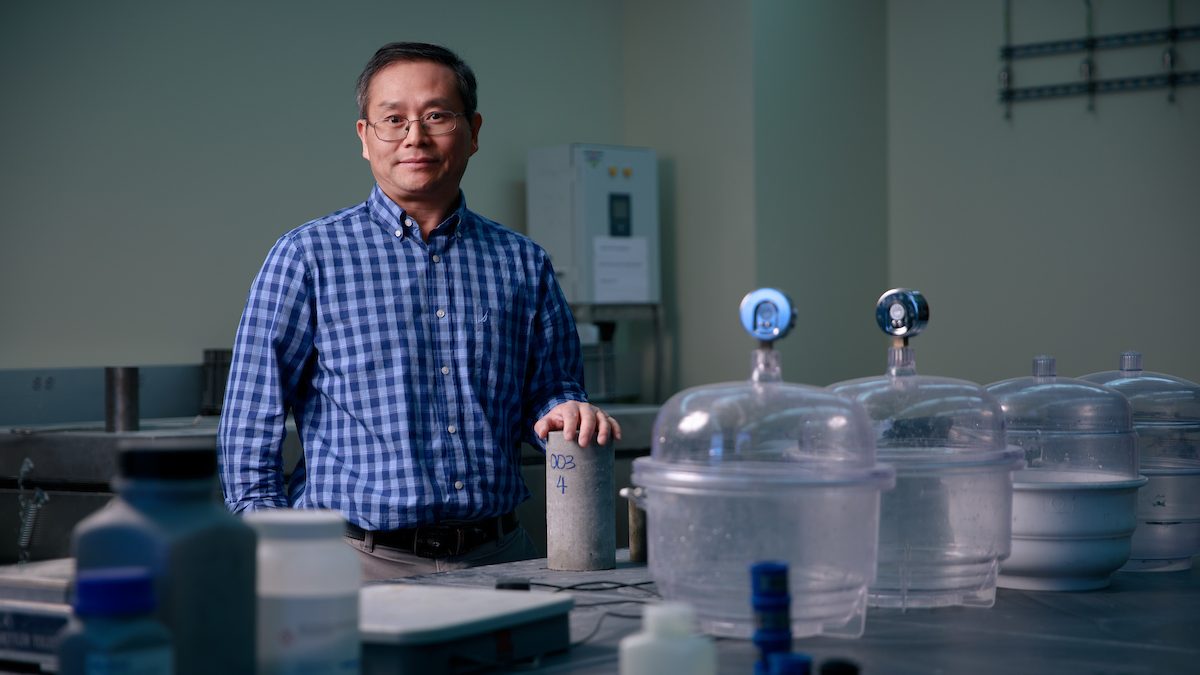An innovation developed in an engineering lab at The University of Alabama will help a Canadian company improve its solution to reduce emissions of a harmful greenhouse gas created by concrete production.


Doctorate student Monica Lages Do Amaral takes concrete samples made in the lab from a curing room.
The company has licensed patented technology developed in the lab of Dr. Jialai Wang, professor of civil, construction and environmental engineering, to help reduce emissions of carbon dioxide, a gas contributing to global warming, in its manufacturing process.
“The process of invention that leads to licensing intellectual property from the University enriches the educational experience of our students and sharpens the expertise of our faculty while creating positive impact to our society,” said Dr. Nghia Chiem, director of the Office for Innovation and Commercialization. “This new partnership will help prove a more environmentally sustainable method of making concrete that also results in a better product.”
The process to make the commonly used cement in concrete, called Ordinary Portland Cement, accounts for about 7% of carbon dioxide emissions in the United States and can account for 10% of emissions for some countries. Reducing emissions could help companies meet possible future environmental standards while contributing to decarbonization now.
Wang and his students have shown capturing the gas and reinserting it into the slurry that forms the cement can store the carbon dioxide in chemically stable minerals, capturing it permanently in the concrete.
The process results in concrete richer in calcium carbonate, which improves performance. The strengthened concrete could mean using less of the material, conserving resources and costs, Wang said.
“The company saw a very good opportunity with our technology in its process,” he said. “This is an exciting opportunity for the technology to be used in the market.”
Work continues on improving the process in Wang’s lab with other patents pending or in the pipeline for application.

Engineering doctoral student Xiaodong Wang mixes carbon dioxide with a cement slurry.
Doctoral student Abdulmalik Ismail uses a machine to test the durability of concrete samples made for research.
Contact
Adam Jones, UA communications, 205-348-4328, adam.jones@ua.edu
